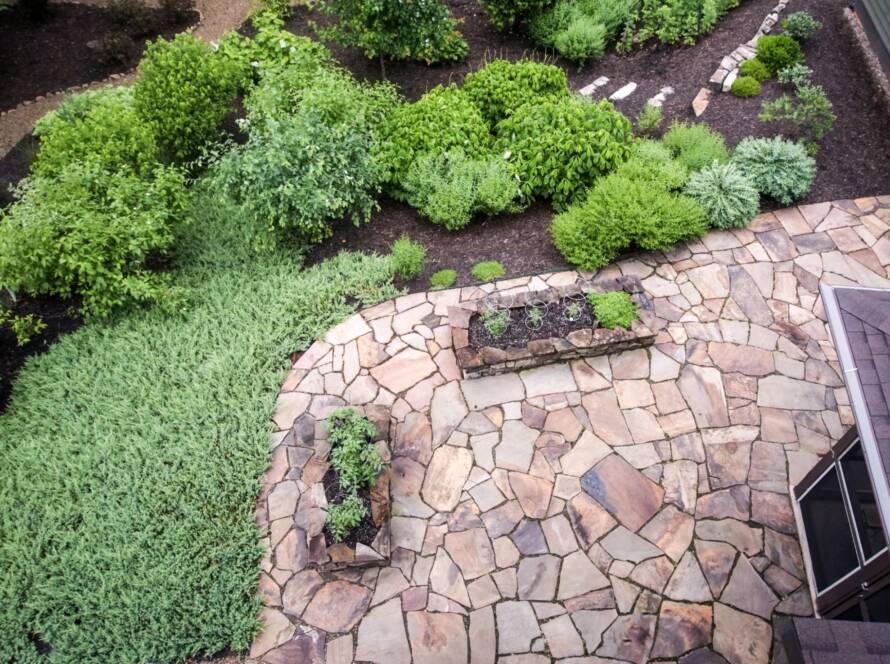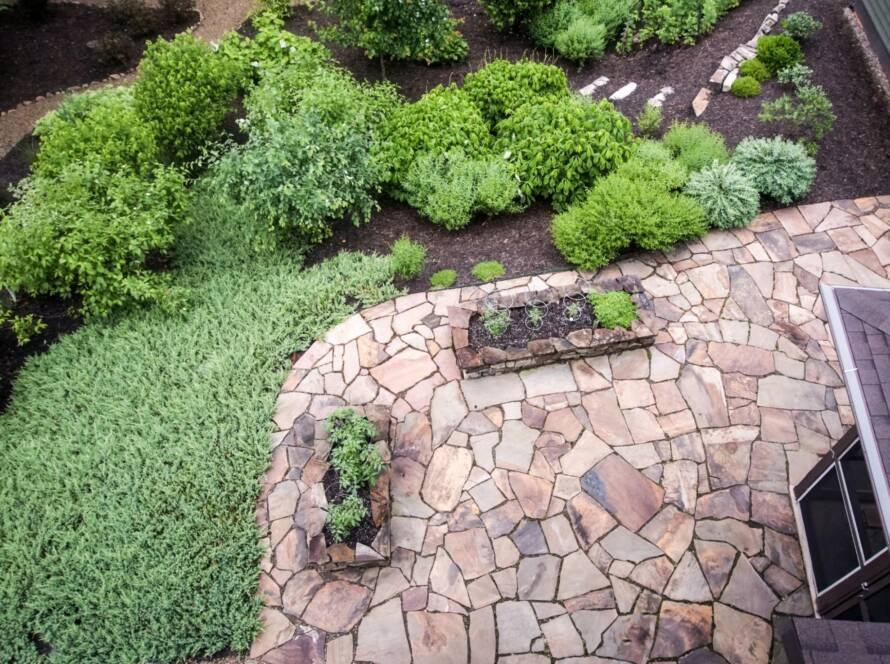Outdoor spaces set the tone for how a property is perceived. Greenery brings life and color, but it often feels scattered without structure. Hardscaping creates the framework that grounds natural beauty and adds durability. It gives purpose, order, and flow to yards while extending their usefulness across every season. Property owners prioritizing hardscaping first often achieve outdoor spaces that look finished, organized, and ready for daily enjoyment.
Why Hardscaping Shapes Every Outdoor Experience
Hardscaping gives outdoor areas the structure they need to function as valid property extensions. It directs movement, supports greenery, and provides features that last for decades. The right design choices set the tone for comfort and style. This foundation becomes the starting point for every other element in the yard.
Builds Structures That Ground Outdoor Spaces
Outdoor projects always begin with a stable framework. Hardscaping elements create the structure that supports softscaping features and ensures usability. When surfaces, walls, and pathways are in place, every detail around them gains clarity. Without these built features, a landscape lacks function and balance.
What Hardscaping Means in Outdoor Design
Hardscaping refers to the built features that organize and define exterior spaces. Examples include patios, pathways, retaining walls, driveways, and decorative stone structures. These components differ from softscaping elements, including plants, soil, and lawns. Hardscaping establishes how people move, interact, and enjoy the property. It also creates the boundaries where landscaping thrives instead of spreading without control. These elements are often the first step in any professional landscape design project.
Balances Function and Aesthetic Appeal
A strong outdoor design offers beauty with practical use. Retaining walls manage slopes and erosion, while pavers and concrete create safe, defined paths. Choices of stone, brick, or wood add personality and complement architecture. When combined thoughtfully, hardscaping makes the landscape visually appealing and easy to maintain. It ensures that outdoor areas support both daily living and visual charm. Similarly, it creates harmony that enhances the experience of the property as a whole.
Designs Outdoor Spaces Built for Everyday Use
The usefulness of an outdoor space depends on how well it is structured. Hardscaping turns open yards into organized settings with walking, gathering, and relaxing areas. These features separate functional zones while guiding movement naturally. With them, property owners gain practical and visually balanced spaces.
Pathways That Direct Movement Smoothly
Pathways serve as both guides and protective surfaces for outdoor use. They prevent foot traffic from damaging lawns while offering safe, clear routes. Materials like stone, concrete, or pavers provide durability and style suited to the home’s design. Well-placed paths link entrances, gardens, and gathering spots seamlessly. Additionally, they improve accessibility for all users, reducing risks in wet or uneven terrain. Pathways are one of the simplest yet most effective ways to organize a property.
Patios, Decks, and Social Areas
Patios and decks expand outdoor living spaces with permanence and style. These hardscaping features provide designated spots for entertaining, dining, or relaxing in comfort. Stone, brick, or wood materials allow property owners to customize them to match their homes. A well-designed patio becomes a natural extension of indoor space. Similarly, decks create raised platforms that add dimension and variety to yards. Both features improve functionality by supporting gatherings year-round in any season.
Retaining Walls for Stability and Use
Retaining walls protect soil from erosion while adding structure to sloped properties. They transform uneven ground into usable terraces for gardens, seating areas, or play zones. Materials such as natural stone or interlocking blocks combine strength with visual appeal. These walls reduce drainage issues that often cause damage to landscaping. Additionally, they serve as frames that divide outdoor areas into distinct zones. Retaining walls are both protective features and key design elements in hardscaping.

Outdoor Kitchens and Extended Living
Outdoor kitchens represent one of the fastest-growing trends in hardscaping. With permanently built-in features, they bring cooking, dining, and entertainment outdoors. Stone counters, grills, and fire pits add both convenience and value. These spaces encourage more yard use throughout the year and increase a property’s appeal for guests and potential buyers. An outdoor kitchen is a functional investment that blends lifestyle with design.
Anchors Outdoor Design With Lasting Features
Outdoor design needs structure to avoid appearing cluttered or incomplete. Hardscaping provides this anchor by framing softscaping elements and tying them together. It defines borders, creates balance, and adds focal points that catch the eye. Without hardscaping, yards often feel unfinished or lacking direction.
Hardscaping Frames Plant Life
Hard surfaces emphasize greenery by providing strong lines and contrast. Stone borders keep gardens neat while drawing attention to color and texture. Raised beds add dimension while protecting plants from spreading uncontrollably. These features not only highlight beauty but also reduce upkeep. Additionally, clear boundaries help maintain long-term order in landscapes. Framing plants with hardscaping turns natural growth into a curated design.
Creates Focal Points That Attract Attention
Focal points bring depth and direction to outdoor design. Hardscaping creates them with fire pits, fountains, sculptures, or stone seating areas. These features pull visitors’ eyes toward specific areas and encourage gathering. They also help balance wide open yards that might otherwise lack character. With careful design, focal points add both beauty and social function. Similarly, they transform ordinary spaces into memorable environments.
Choosing Styles That Match the Property
Hardscaping materials shape the overall mood of outdoor design. Rough stone conveys rustic warmth, while polished concrete feels sleek and modern. Bricks and pavers offer timeless appeal that fits many architectural styles. Mixing textures creates variety without clashing with the surrounding greenery. Additionally, consistency in material choice prevents the design from feeling fragmented. Style decisions in hardscaping ultimately reflect the property owner’s identity.
Strengthens Outdoor Surfaces for Durability
Outdoor spaces must withstand heavy use and harsh weather. Hardscaping provides the permanence that softscaping alone cannot offer. Quality surfaces resist wear, reduce upkeep, and maintain value for years. Investing in durable materials creates outdoor areas that stand the test of time.

Materials That Resist Weather Damage
Different climates require surfaces that can handle local conditions. Natural stone resists heavy rain, while interlocking pavers adapt to temperature shifts. Proper installation techniques prevent cracking, sinking, and long-term damage. Sealed surfaces also add protection from moisture and stains. Additionally, choosing the right material reduces costly repairs. Weather-resistant hardscaping ensures outdoor designs remain intact for decades.
How Hardscaping Reduces Maintenance Needs
Hardscaping simplifies yard care by minimizing recurring issues. Patios and paved paths limit weed growth and keep mud under control. Retaining walls stop water runoff from eroding soil. These features save hours of manual work each season. Additionally, they reduce the need for chemical treatments that harm the environment. A well-planned hardscape allows more enjoyment with less effort.
Long-Term Value for Property Owners
Properties with strong hardscaping often sell faster and at higher prices. Buyers recognize the appeal of finished, usable yards with defined spaces. While construction costs can seem high, the return outweighs the investment. Hardscaping projects increase resale value by presenting a complete outdoor environment. Similarly, they reduce the likelihood of expensive repairs later. For property owners, durable hardscaping is an asset that pays off for years.
Expresses Outdoor Style Through Built Features
Hardscaping does more than add structure; it creates opportunities for creativity. Material choices, layouts, and finishes give each property a unique look. These features reflect personality and make spaces feel personal. The result is a property that feels both functional and distinct.
Custom Designs with Pavers and Patterns
Patterns in stone or brick layouts give ordinary surfaces character. Options like herringbone, basket weave, or circular designs add movement and interest. These details allow homeowners to create yards that look different from their neighbors’. Customization makes even small patios feel artistic. Additionally, patterns can highlight specific zones such as entrances or dining areas. Hardscaping design choices bring individuality to outdoor living.
Lighting Built Into Hardscaping Surfaces
Lighting adds safety and atmosphere to outdoor spaces after dark. Steps and walkways with lighting reduce accidents while creating visual appeal. Accent lights highlight retaining walls, focal points, or gardens. Integrated lighting extends the use of patios and decks into the evening. Similarly, it allows outdoor spaces to support both relaxation and entertaining. Landscape lighting works best when planned alongside hardscaping installations.
Sustainable Hardscaping Options for Today
Sustainable hardscaping uses materials that protect the environment and support long-term care. Permeable pavers allow water to filter through instead of causing runoff. Recycled or locally sourced materials reduce transportation costs and waste. Natural stone often blends seamlessly with its surroundings while lowering ecological impact. Additionally, sustainable designs keep properties aligned with modern values. Eco-friendly hardscaping offers both beauty and responsibility.
Plans Outdoor Projects the Right Way
Every outdoor project should start with permanent features before planting begins. Hardscaping lays the groundwork for landscaping and avoids costly errors. It defines zones, drainage, and circulation before soft elements are added. Without this sequence, property owners risk wasted resources and disjointed design.
Why Hardscaping Should Precede Planting
Construction work damages plants if done after landscaping. Before greenery is installed, walkways, patios, and retaining walls should be completed. Once in place, they provide a framework for planting beds and decorative elements. This sequence ensures smoother progress and less rework. Additionally, it reduces stress for property owners by preventing project delays. Planning in the correct order saves both time and money.
Planning Errors to Avoid in Hardscaping
Poor planning often leads to design frustration and unexpected costs. Oversized patios or pathways can overwhelm small yards. Inadequate drainage design creates water pooling and soil erosion. Rushed planting without structure leads to chaotic layouts that require rework. Similarly, failing to choose durable materials results in quick deterioration. Avoiding these mistakes ensures outdoor designs remain practical and attractive for years.
Shape Outdoor Living Through Hardscaping
Hardscaping turns unused ground into purposeful spaces that support daily living and long-term value. Every wall, path, and patio adds definition while extending comfort beyond the home. Waiting to act only postpones the benefits of a yard that feels complete. Start shaping your outdoor living today with hardscaping that blends strength, style, and lasting function.
See how thoughtful hardscaping creates value beyond the surface. The Brady Landscaping & Construction blog offers expert tips.


